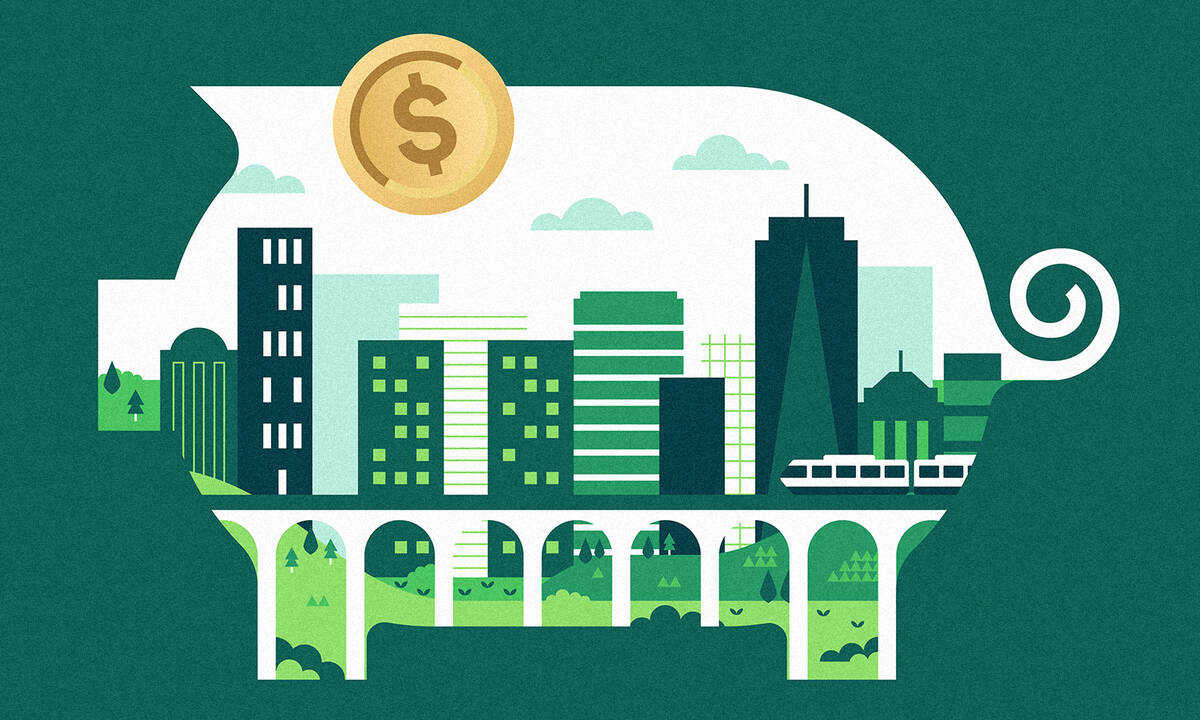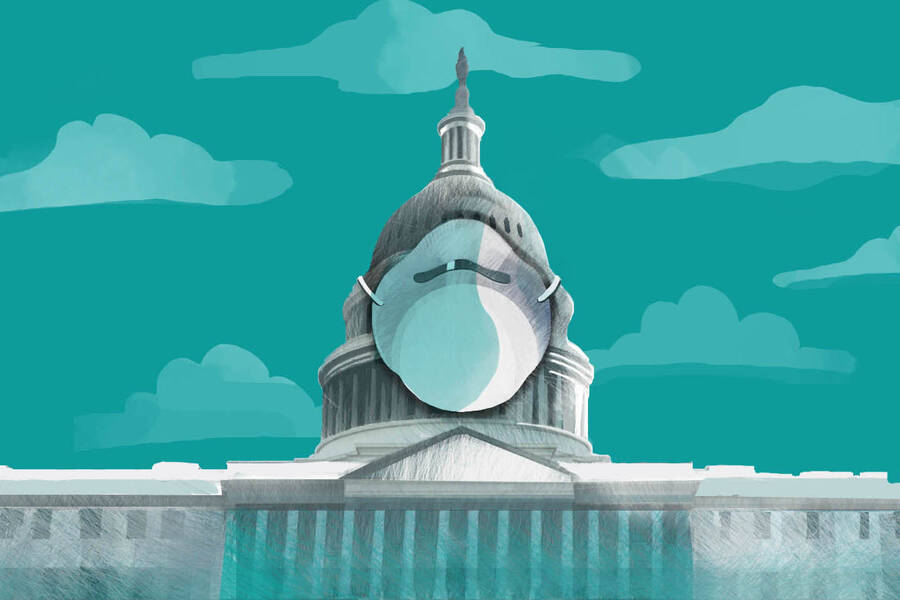
Riley Mann
Chicago has been hit hard by COVID-19, with more than 50,000 confirmed cases and more than 2,500 deaths. The social and economic toll has also been devastating. At its worst, hours worked by hourly employees plummeted by 60 to 80 percent; CTA ridership was down 87 percent.
Moreover, the effects of the COVID-19 crisis have not been shared by all Chicagoans equally. For instance, despite accounting for just 28 percent of the population, Black Chicagoans have constituted 44 percent of the city’s coronavirus deaths. And low-wage jobs—disproportionately held by Black and Latino workers—are at the highest risk of being lost forever.
In the short term, the city knows what it must do: determine how to keep its citizens safe as it slowly reopens. But what of the medium to long term? How can the city recover from the economic devastation caused by the novel coronavirus—and emerge stronger, and more equitable, than ever?
Chicago Mayor Lori Lightfoot put together the COVID-19 Recovery Task Force in April with the aim of providing the city with recommendations on how to do just this. Ben Harris, the executive director of the Kellogg Public–Private Initiative, a visiting associate professor at Kellogg, and former chief economist to Vice President Joe Biden, was on this task force, which published its recommendations late last week.
We checked in with Harris to learn more about the city’s path forward.
Editor’s note: This interview has been edited for length and clarity.
Kellogg Insight: What was your role on the task force?
Ben Harris: The task force had several subgroups. I was co-chair of a subgroup working on the Change Study: a comprehensive, empirical report that would serve as the basis of the recommendations for the other groups. It did this by laying out some of the long-term challenges facing residents, as well as the incredible resources that the city has, and finally the challenges related specifically to COVID: Which jobs are at-risk? How are small businesses vulnerable? Are families able to get food? Are people at risk of eviction?
KI: Can you talk a little bit about the recommendations made by the task force?
Harris: It’s important to keep in mind that every city in the country is undertaking a similar exercise. And every country in the world is thinking about a revitalization plan right now. So I personally thought it was important that we go easy on policies that require the city to beat out others, because competition is so fierce. I didn’t want to center our revitalization on attracting businesses to move from other places, because other places are fighting like hell to keep those businesses, and other cities are also fighting to get those businesses to move to their city. Instead, I wanted to focus mostly on what you can control, which are the services you provide to the residents and the support you provide for the businesses that are already here.
We ended up with 17 different recommendations. Some of these were approaches that you probably could have predicted in advance, such as reshoring manufacturing. That’s a national trend that we’re seeing in light of some of the shortages around protective equipment and pharmaceuticals. There were also proposals directly aimed at residents, such as pledging resources to childcare or mental health. There was also a pledge to look at innovative approaches for income support.
One recommendation I thought was really interesting was trying to make Chicago a particularly attractive location for second headquarters (HQ2) for businesses. The idea was, look, corporations may be thinking about diversifying their headquarter operations—both in part due to risks owing to a future pandemic and in part to concerns over climate change. Chicago, with its transportation networks, workforce, and infrastructure, could be a natural fit for these companies.
“It’s really hard to keep neighborhoods revitalized when you have people moving out. It’s really hard to deal with city finances when your tax base is shrinking.”
— Ben Harris
KI: How specific are these recommendations? Were you saying we should try to get this particular company in this particular industry to open up a location in this particular spot using this package of incentives?
Harris: The recommendations were relatively detailed and the discussions were very detailed. And so when we were talking about, for example, where to incentivize movie production, we would point to neighborhoods that would be particularly attractive. There’s an appealing space in this neighborhood that might serve as a suitable location for a studio. So we weren’t picking out which block, but we were looking at the neighborhood level.
Now, not all of that made it into the public document: we didn’t want to give the mayor a 1,000-page report! But I think that the document is sufficiently detailed so that policymakers in the mayor’s office and State House can pick it up and quickly turn it into action and legislation.
KI: That brings me to my next question, which is: Whom is this document for? Whose job is it to follow through on these recommendations? If the State House does not pick up these recommendations, is the mayor going to be able to act on them alone?
Harris: Most of it, the mayor can do on her own. Now, I wouldn’t say that she has endorsed them all yet, but as co-chair of the task force, Lightfoot set the priorities and has been in constant conversation with us, so I hope she will uphold most if not all of them. In fact, for each of the recommendations, the mayor’s office identified a department in the office that’s responsible for implementation. So if a business leader or a union leader or a citizen wants to know how things are going with the recommendation, they know precisely whom to contact. I thought that was both responsible and smart.
Of course, having federal help would accelerate many of these. It’s clear there’s been wildly insufficient support from the federal government for states and cities. And if the federal government and Congress decide to revisit that approach, it would help out Chicago and every other major U.S. city.
But I think if you look at the recommendations, you’ll see they can be done by the city. This is not waiting for the cavalry to come. This is acknowledging that Mayor Lightfoot has a great deal of influence over the economy and the social structure of the city. And there’s a lot she can do by herself.
KI: Can you talk about the money that would potentially be required to address a lot of these issues?
Harris: Yeah, that’s the five-billion-dollar question! But actually, these recommendations are realistic. The city of Chicago does not have unlimited resources, and these were designed with reality in mind.
KI: Can you give an example?
Harris: We talked about giving an earned income tax credit to every worker in the city. The earned income tax credit is a federal wage subsidy for low-income workers, particularly those with kids. Now, if you had all of the resources in the world, you could just go ahead and give every low- and middle-wage family a really big increase in this credit and just tack onto the federal program. But there just isn’t the money there for that. So we considered piloting income-support programs in Chicago, rather than diving into full-fledged programs.
Other recommendations were built around, for example, Chicago’s brand and making Chicago an appealing place for tourism and business gatherings after the pandemic passes, but it wasn’t a wholesale rebuild of Chicago’s infrastructure. That was both practical and probably the right response, because we don’t need to rebuild the whole city. But we do need to think hard about making an appealing city for people and commerce.
KI: Speaking of which: Are there any action items here for the private sector? What do you want businesses to take away from this report?
Harris: There are certain things that businesses can do. For example, we documented the high rate of lack of health-insurance coverage in certain zip codes. We documented how vulnerable certain workers were in particular industries. Businesses can provide better benefits. They can play a real role in providing childcare or childcare-referral services. I know there’s always this push and pull between labor costs and profit, but laying off workers right now is incredibly problematic. So one of the best things that businesses could do would be to keep their workers employed.
KI: How many of these recommendations are very specific to Chicago? Does Chicago have a different path forward than other major cities?
Harris: Some recommendations, like needing to provide support for mental and emotional health, are something that every city in our country needs. Trying to attract more tourism is something that most U.S. cities are probably thinking through right now. But others are unique to Chicago. For example, there’s probably only a dozen U.S. cities that can plausibly claim to be an attractive hub on a big scale for HQ2. When it comes to being a true manufacturing hub, there are a lot of cities that either don’t have the workforce or don’t have the logistics built up. Chicago does.
Chicago also has some unique challenges. All cities have rich neighborhoods and not rich neighborhoods, but in Chicago, the differences are pretty stark. There are some areas with really high concentrations of people who are just suffering in ways that other residents are not. And we have one challenge that peer cities like New York and Boston and Los Angeles and Houston don’t have at all, and that is with population outflow. Those cities are expected to grow. Chicago is not expected to grow; it’s supposed to be mostly stagnant. It’s really hard to keep neighborhoods revitalized when you have people moving out. It’s really hard to deal with city finances when your tax base is shrinking. It’s hard to attract headquarters to your city when they’re worried about having workers. So while Chicago has a lot of resources that other cities don’t have, this is a real challenge.
KI: During the middle of your work with the task force, George Floyd was killed by police, and there were major protests in Chicago and in the rest of the nation. Did the national conversations around race make their way into the recommendations you were drafting?
Harris: It was such a momentous moment in our country’s history. I think it’s impossible for it not to have influenced our work in subtle ways and sometimes not so subtle ways. But the mayor’s values are pretty credibly built around issues of equity and inclusion, so nobody was going to get put on the task force in the first place if this wasn’t already a priority.



